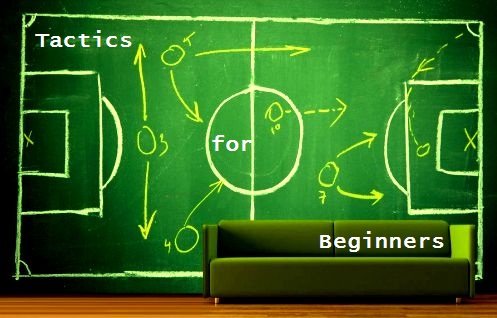By Bob Pearce and Mihail Vladimirov.
‘Not Xavi or Iniesta, or even Messi’
The Midfield
Midfield is at the centre of the match on the pitch and the game tactically. It would seem the core purpose of the midfield is to protect the defence and deliver to the attack. A good way to see what they do is to ask what happens if they ‘fail’. If they get it wrong the defence is exposed and punished, and the attack will have no supply and starve. And to achieve these they must dominate the middle of the pitch. Is it as simple as that – dominate to protect and deliver?
In a nutshell – yes, it’s as simple as you described. The midfield is tasked to link the team – to pick up the ball from the defence and initiate the transitioning phase. The midfield is the ‘middle-man’, so to speak. Without it the team wouldn’t transition properly in attack (unless your transitions are based on ‘hoofing’ directly from defence to attack), nor would it protect the team in defence. But although it’s simple to explain, it doesn’t necessarily mean it’s as simple to execute too. Everything depends on the whole balance of the team and of the midfield itself, how the team is constructed, and how it’s instructed to behave tactically.
Midfield is the transition stage, stuff is always passing through, defending when the attack breaks down, attacking when the defence is successful. From attack into defence, and defence into attack. There is a constant flipping back and forth in the mind-set as possession is won and lost. While this is true of all players wherever they play, it must be particularly so for the midfield?
Yes, the midfield is the crucial part of the team as no other part has such dual responsibilities both when the team is in or out of possession.
When thinking about tactics does the manager focus on the midfield first, and then add a defence and attack to compliment it?
Depends on his own preferences and style of play. For example Hodgson is a manager that first and foremost is concerned with his team’s defensive phase and line of play. Only then does he look to build on. For every possession-oriented manager (Guardiola, van Gaal, Rodgers, Wenger, etc), the crucial part is the transitional phase – so they are most concerned with the midfield zone. Managers like Dalglish and Redknapp, for example, are most concerned with their attacking phase and lines of play. It’s all about philosophy and which phase or line of play you see as the most crucial for your style.
So some prioritise defence, some prioritise attack, and some prioritise the connection between defence and attack (in both directions)?
Yes. It depends generally on the manager’s vision and preferences. As a general example, managers like Redknapp and Dalglish prioritise attack. Controlling a match for them means their team are sending wave after wave of attack towards the opposition. Then there are managers like Hodgson, Pulis and Allardyce who put so much emphasis on the defence and the quick transitions between defence and attack that they are happy to sacrifice any midfield play in order to be tight at the back while still retaining some potency in attack. On the other hand, every possession-oriented manager like Guardiola, de Boer, Rodgers, Wenger et al puts increased focus on the midfield play. They all emphasise this part of their team in both their general set-up and specific patterns of play. For such managers controlling the middle zone – hence the passing flow and the possession dominance – is the key to controlling the other two zones (defence and attack).
Liverpool fans used to sing ‘We’ve got the best midfield in the world’. It is rare for fans to show an appreciation of a whole unit within a team. Can you describe what, for you, would be the qualities of the ‘best midfield in the world’?
In principle this is hugely dependent on the team’s whole style in general and specific playing patterns. So in a way the best midfield is the one that is most suitable to what you want to achieve tactically. There is no point having Pirlo and Alonso in your midfield if you insist on short, recycling tiki-taka oriented passes. There is also no point having Xavi and Iniesta when you prefer more direct and penetrative passes to speed up your team’s transitions. Both sets of players are good enough when you look at them in isolation, but it’s their suitability to how you prefer to play that is the key.
Personally speaking – given I’m a Benitez student – I live and breathe 4-2-3-1, with a focus on quick transitions, which leads to increased penetration, all achieved within a possession-oriented framework and patterns of play. So it’s only natural that my ‘best midfield’ (read my most suitable midfield) will comprise a destroyer, a passer and an attacker. Or to use the already preset terms, a midfield trio in 2-1 shape with a ‘retriever’, a ‘deep-lying playmaker’ and a ‘false 10’. You could read here for their respective specific qualities.
Putting aside the various styles of play for the moment, are there standard requirements of all midfield units, or does it entirely depend on the tactical plan?
The rest of this article is for subscribers only.
[ttt-subscribe-article]
